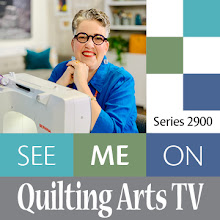I was very interested in the Australian trees, and wished I had a botanist to take me around the city! I had never seen many of the tree species, and could not identify them without doing some research. According to the City of Mebourne website, there are “more than 25,000 native trees and 25,000 exotic (non-native trees) in streets and parks around the municipality.”
I took many photos of the trees in Carleton Gardens that line the sidewalk leading to the Royal Exhibition Building (see photo above). They had leaves like our southern Magnolia, and the bark and shapes of the lower trunks and buttress roots reminded me of elephants! They are actually Moreton Bay Fig (Ficus macrophylla) trees, a large evergreen banyan tree native to the eastern Australian coast. It can reach 200 feet tall.
The gum trees were especially intriguing. “Gum” is a common name for eucalyptus trees. The name comes from the
fact that the trees ooze lots of sap if they are cut. They are not
related to the Sweet Gum tree found in the U.S. or the Black Gum. Nearly
all gum trees are native to Australia. they are the primary food of
koalas.
Most Americans know about gum trees from the 1932 song by Marion Sinclair (composed for a competition held by the Victorian Girl Guides):
Kookaburra sits on the old gum tree,
Merry merry king of the bush is he.
Laugh, Kookaburra, laugh, Kookaburra,
Gay your life must be!
Kookaburra sits on the old gum tree,
Eating all the gum drops he can see.
Stop Kookaburra, stop Kookaburra
Save some there for me!
Kookaburra sits on the old gum tree,
Counting all the monkeys he can see.
Laugh Kookaburra, laugh Kookaburra
That's not a monkey, that's me!
The are in the family Myrtaceae (Myrtle) and in three genera within this family: Eucalyptus, Angophora and Corymbia. Oil from the leaves is used in many medications, including Vicks salve and coughdrops.
The Blue Gum can grow to 230 feet tall! I think this is the variety I saw when riding back to Melbourne from the Healsville Sanctuary. They were so huge that they looked wrong or artificial to my eye.
I'm not sure what species this is, but it is some sort of gum. The bark was very smooth and creamy white, and the leaves a beautiful silver green. It was just outside my hotel room. This photo shows the buds, with one flower emerging:
The
photo below shows the gum tree in bloom. If you look toward the lower
right, you can see one bloom that is pushing off its little cap from the
bud!
Once the bloom is spent, the base of the bloom remains as the little shreds of the flower fall out:
It hardens and turns into a pod:
Here is another interesting tree I found in St. Kilda. Its flowers were similar to the ones mentioned in a previous post (whose spent blooms looked like corn cobs), but it was on a taller tree (about 10' tall). This is the bud:
This is the bloom:
After the bloom is spent, it dries out and turns a darker tan color. And then it dries out more and turns into a seed pod:
The seed pod has little slits in it to release the seeds:


































































